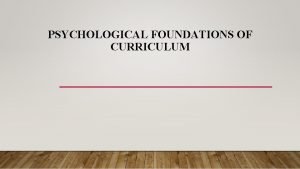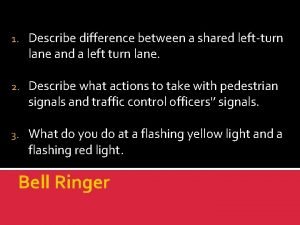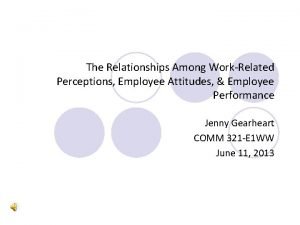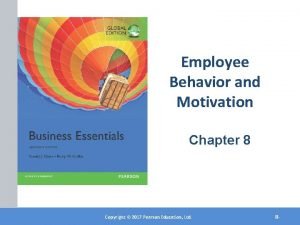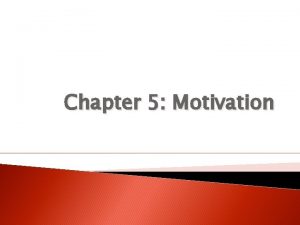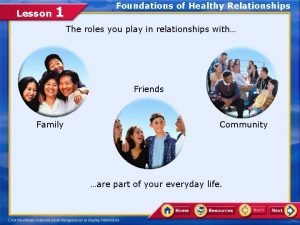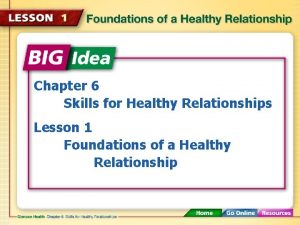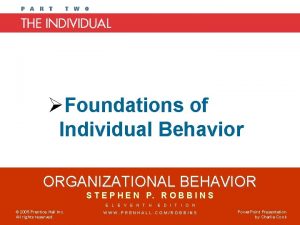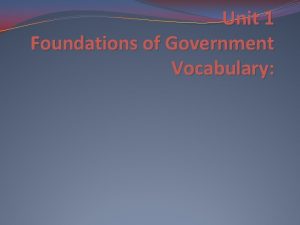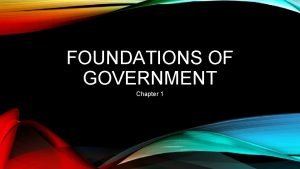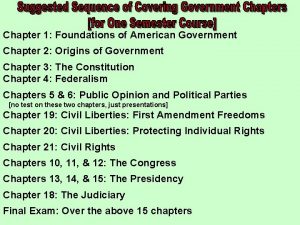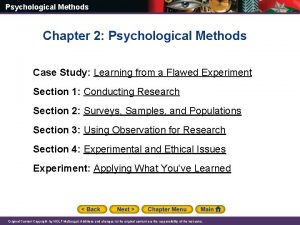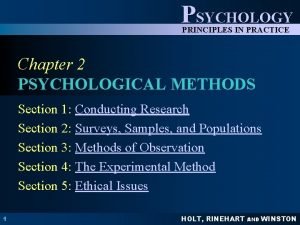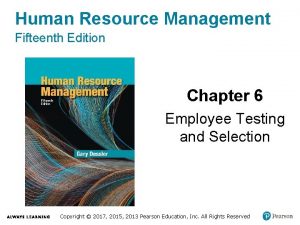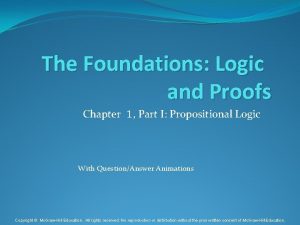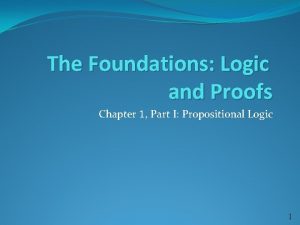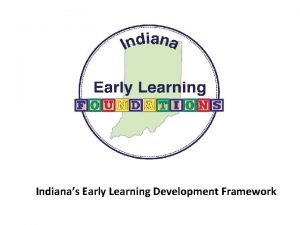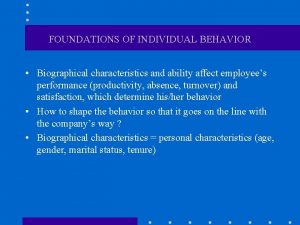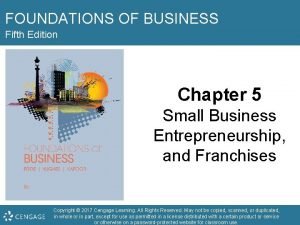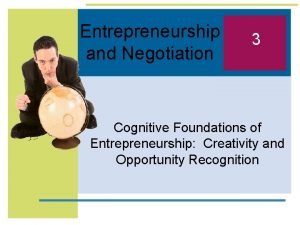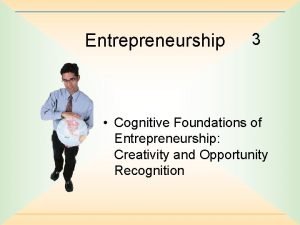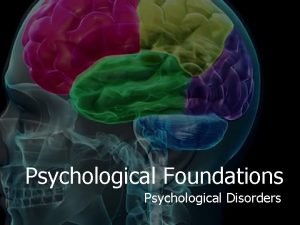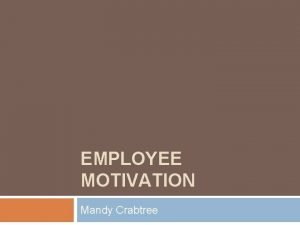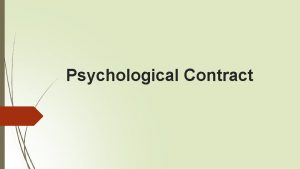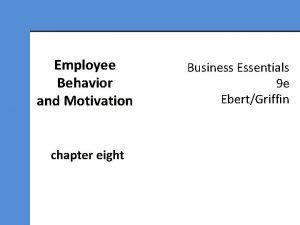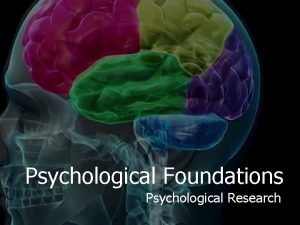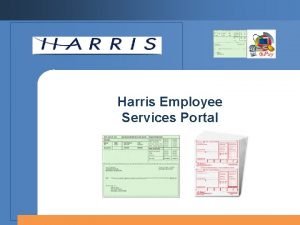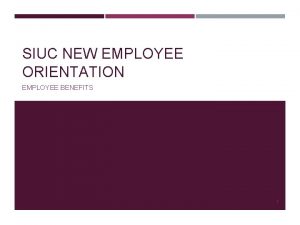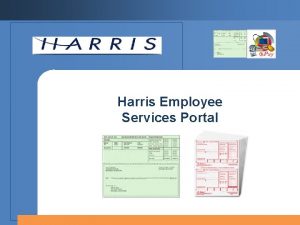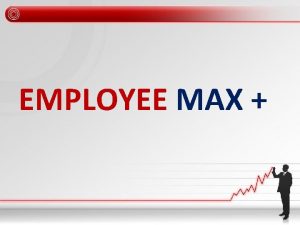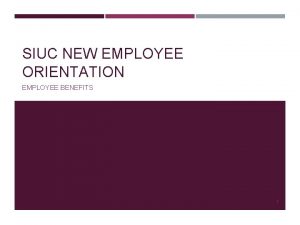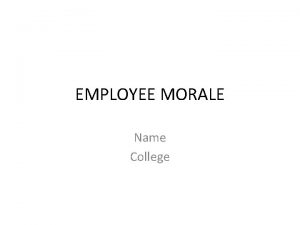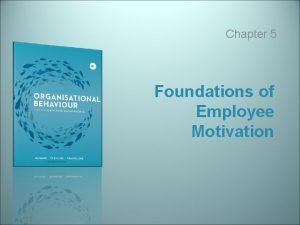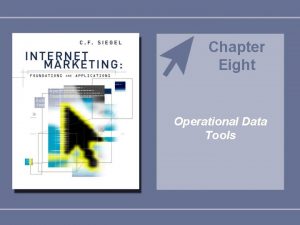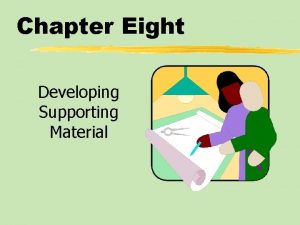Foundations of Motivation Chapter Eight Employee Motivation psychological





































- Slides: 37

Foundations of Motivation Chapter Eight

Employee Motivation • psychological processes cause the arousal, direction, and persistence of voluntary actions that are goal directed

Employee Motivation • Content theories of motivation • focus on identifying internal factors such as instincts, needs, satisfaction, and job characteristics that energize employee motivation. • Process theories of motivation • focus on explaining the process by which internal factors and cognitions influence employee motivation

Overview of Motivation Theories

Need Theories of Motivation • Needs • Physiological or psychological deficiencies that arouse behavior.

Maslow’s Need Hierarchy Theory • Motivation is a function of five basic needs – physiological, safety, love, esteem, and self-actualization • Human needs emerge in a predictable stair-step fashion

Maslow’s Need Hierarchy

Alderfer’s ERG Theory • Existence needs (E) • the desire for physiological and materialistic wellbeing; • Relatedness needs (R) • the desire to have meaningful relationships with significant others • Growth needs (G) • the desire to grow as a human being and to use one’s abilities to their fullest potential

Question? Rachel has the desire to accomplish something difficult? This relates to Mc. Clelland's need for A. Affiliation B. Achievement C. Power D. Glory

Mc. Clelland’s Need Theory • Need for achievement • Desire to accomplish something difficult. • Need for affiliation • spend more time maintaining social relationships, joining groups, and wanting to be loved • Need for power • Desire to Influence, coach, teach, or encourage others to achieve.

Mc. Clelland’s Need Theory Achievement-motivated people share three common characteristics: 1. Preference for working on tasks of moderate difficulty 2. Preference for situations in which performance is due to their efforts 3. Desire more feedback on their successes and failures

Herzberg’s Motivator-Hygiene Model

Herzberg’s Motivator–Hygiene Theory • Motivators • job characteristics associated with job satisfaction • Hygiene factors • job characteristics associated with job dissatisfaction

Adams’s Equity Theory of Motivation • Equity theory • model of motivation that explains how people strive for fairness and justice in social exchanges or giveand-take relationships

Negative and Positive Inequity • Negative inequity • Comparison in which another person receives greater outcomes for similar inputs. • Positive inequity • Comparison in which another person receives lesser outcomes for similar inputs.

Negative and Positive Inequity

Practical Lessons from Equity Theory • No matter how fair management thinks the organization’s policies, procedures, and reward system are, each employee’s perception of the equity of those factors is what counts. • Managers benefit by allowing employees to participate in making decisions about important work outcomes

Practical Lessons from Equity Theory • Employees should be given the opportunity to appeal decisions that affect their welfare. • Managers can promote cooperation and teamwork among group members by treating them equitably

Practical Lessons from Equity Theory • Employees’ perceptions of justice are strongly influenced by the leadership behavior exhibited by their managers • Managers need to pay attention to the organization’s climate for justice.

Question? At work, if Jamal's outcome to input ratio is greater than that of Tony's (his relevant co-worker), Jamal will experience A. Equity. B. No satisfaction. C. Positive inequity. D. High dissatisfaction.

Expectancy Theory of Motivation • Expectancy theory • Holds that people are motivated to behave in ways that produce desired combinations of expected outcomes.

Vroom’s Expectancy Theory • Motivation boils down to the decision of how much effort to exert in a specific task situation. • Expectancy • represents an individual’s belief that a particular degree of effort will be followed by a particular level of performance.

Expectancy The following factors influence an employee’s expectancy perceptions: • • • Self-esteem. Self-efficacy. Previous success at the task. Help received from others. Information necessary to complete the task. Good materials and equipment to work with

Vroom’s Expectancy Theory • Instrumentality • A performance outcome perception • Valence • the positive or negative value people place on outcomes • Outcomes • different consequences that are contingent on performance

Question? Niles believes that he will be promoted if he meets his sales goals. This is his ______ perception. A. Expectancy B. Instrumentality C. Valence D. Outcome

Managerial and Organizational Implications of Expectancy Theory

Goals: Definition and Background • Goal • what an individual is trying to accomplish • object or aim of an action

How Does Goal Setting Work • Goals direct attention • Goals regulate effort • Goals increase persistence • Goals foster the development and application of task strategies and action plans

Practical Lessons from Goal-Setting Research 1. Specific high goals lead to greater performance • Goal specificity – quantifiability of a goal 2. Feedback enhances the effect of specific, difficult goals 3. Participative goals, assigned goals, and self-set goals are equally effective.

Practical Lessons from Goal-Setting Research 4. Action planning facilitates goal accomplishment. • Action plan outlines the activities or tasks that need to be accomplished in order to obtain a goal. 5. Goal commitment and monetary incentives affect goal-setting outcomes • Goal commitment – extent to which an individual is personally committed to achieving a goal

Question? Julia wants to become a successful heart surgeon. This reflects Julia's A. Expectancy B. Perception C. Goal D. Personality

Top-Down Approaches • Scientific management • that kind of management which conducts a business or affairs by standards established by facts or truths gained through systematic observation, experiment, or reasoning

Top-Down Approaches • Job enlargement • Involves putting more variety into a worker’s job by combining specialized tasks of comparable difficulty. • Job rotation • moving employees from one specialized job to another

Top-Down Approaches • Job enrichment • Building achievement, recognition, stimulating work, responsibility, and advancement into a job.

The Job Characteristics Model

Bottom-Up Approaches • Job crafting • Proactive and adaptive employee behavior aimed at changing the nature of one’s job.

Idiosyncratic Deals (I-Deals) • Idiosyncratic deals (i-deals) • Represent “employment terms individuals negotiate for themselves, taking myriad forms from flexible schedules to career development. ”
 What are the five psychological foundations of curriculum
What are the five psychological foundations of curriculum Flat shape with eight sides
Flat shape with eight sides What are the meanings of the eight shapes and eight colors
What are the meanings of the eight shapes and eight colors Employee attitudes and employee performance
Employee attitudes and employee performance Employee behavior and motivation
Employee behavior and motivation Employee motivation a powerful new model
Employee motivation a powerful new model What are the three c's of healthy relationships
What are the three c's of healthy relationships Chapter 6 skills for healthy relationships
Chapter 6 skills for healthy relationships Chapter 2 the nursing assistant and the care team
Chapter 2 the nursing assistant and the care team Social learning theory in organisational behaviour
Social learning theory in organisational behaviour Guided reading activity foundations of government lesson 2
Guided reading activity foundations of government lesson 2 Chapter 4 foundations background to american history
Chapter 4 foundations background to american history Personal finance chapter 1 review answers
Personal finance chapter 1 review answers Chapter 1 foundations of government vocabulary
Chapter 1 foundations of government vocabulary Chapter 1: foundations of government pdf
Chapter 1: foundations of government pdf Foundations of government (chapter 1 test form a)
Foundations of government (chapter 1 test form a) Chapter 8 summary the great gatsby
Chapter 8 summary the great gatsby Chapter 18 psychological disorders
Chapter 18 psychological disorders Ch 8 lotf summary
Ch 8 lotf summary Chapter 18 psychological disorders
Chapter 18 psychological disorders Chapter 14 psychological disorders
Chapter 14 psychological disorders Single blind study
Single blind study Chapter 2 psychological methods
Chapter 2 psychological methods Chapter 14 psychological disorders
Chapter 14 psychological disorders Ap psychology chapter 15 psychological disorders
Ap psychology chapter 15 psychological disorders Chapter 6 employee testing and selection ppt
Chapter 6 employee testing and selection ppt Chapter 16: employee safety and health
Chapter 16: employee safety and health Equivalent disjunctive form example
Equivalent disjunctive form example The foundations logic and proofs
The foundations logic and proofs Preschool curriculum framework volume 1
Preschool curriculum framework volume 1 New foundations anderson sc
New foundations anderson sc Indiana early learning foundations
Indiana early learning foundations History and geography the foundations of culture
History and geography the foundations of culture Biographical characteristic of an employee
Biographical characteristic of an employee Foundations of business 5th edition
Foundations of business 5th edition Cognitive foundations of entrepreneurship
Cognitive foundations of entrepreneurship Cognitive foundations of entrepreneurship
Cognitive foundations of entrepreneurship Cy 2550 northeastern
Cy 2550 northeastern
